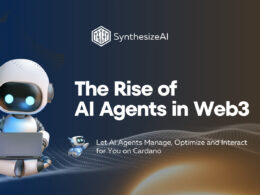For the longest time, identity systems have been managed by centralized authorities, creating a power imbalance where users aren’t in control. Decentralized identities (DIDs) is a transformative approach that shifts this control by giving individuals and entities control over their data, rather than relying on centralized authorities.
As blockchain technology advances and more solutions get built with blockchain as the underlying infrastructure, platforms like Cardano are increasingly focusing on building secure and interoperable identity solutions. Identity is so central to building any solution; in that how users, entities, and devices are authenticated and authorized on the web is a foundation of almost every application.
In the recently concluded Cardano Summit 2024, we had a panel consisting of key figures in blockchain and digital identities exploring how we can apply decentralized identity solutions in real-world scenarios. In the discussion titled “From Concept to Reality: Charting the Course for Decentralized IDs”, panelists highlighted the complex challenges, opportunities, and key differences in implementing DID systems. This article covers the key things you need to know about decentralized identities while highlighting some key learnings from the Summit plenary discussion.
Why the Concept of Decentralized Identity?
Decentralized identities are all about empowering users with self-sovereign identities that enable individuals to own and manage their digital personas without needing a central authority. In the blockchain ecosystem, decentralized identities are a new type of globally unique identifiers that are secured and verified cryptographically. This enables identity management systems built on the DID architecture to support trust without intermediaries. It is essential to maintain trust in sectors like real estate, supply chains, and financial transactions, where knowing the identity of the transacting party is critical.
Key Challenges Facing DID Adoption
Despite its promise to solve challenges associated with conventional identity and access management, decentralized identity solutions face challenges in adoption, including regulatory hurdles, interoperability issues, and technological limitations.
Regulatory Hurdles
Jason Jang, Chief Business Officer at CertiK, highlighted regulatory challenges, particularly the differing approaches across regions. In the U.S. and EU, decentralized identities are viewed as a potential enabler for trust and privacy, whereas in Asia, governments are more cautious, with countries like China restricting DID development. The compliance requirements in Europe, especially with GDPR, require innovative approaches, such as off-chain identity storage to avoid exposing sensitive information on the blockchain.
Interoperability and Adoption
One major issue is the need for a unified identity system across blockchain platforms. Today, multiple ecosystems, such as Polygon ID and Worldcoin, operate in isolation, which can restrict cross-platform usability. Establishing interoperable standards is crucial for DIDs to be widely accepted and usable across chains, allowing users to maintain a single digital identity across multiple platforms and applications.
Cardano’s Role in Expanding DID Solutions
The Cardano blockchain aims to be a foundation for secure, interoperable decentralized identities. According to Lance Bird, a developer with the Global Legal Entity Identifier Foundation, a key factor in the global scalability of DIDs lies in creating identifiers that are “portable and secure.” Cardano’s focus on cryptographic verifiability ensures that DID can bridge various blockchains, a necessity for conducting secure, cross-border transactions.
Bird explained that the Carry Protocol and Verifiable Legal Entity Identifiers (vLEIs) are pivotal technologies for implementing DID in a global context. These identifiers allow businesses to verify entities across borders and industries, creating a trusted network of identities that can facilitate secure transactions and reduce regulatory friction. Cardano’s architecture and its approach to interoperability make it well-suited to integrate with global identity standards, especially given the blockchain’s emphasis on security and cryptographic integrity.
Key Sectors Poised for DID Transformation
With Cardano’s technology and innovation, DIDs can be applied across various industries—from finance to education and healthcare. Below are some real-world examples where decentralized identity can change the way data is managed:
Finance and Real Assets
DIDs have transformative potential for the financial sector by enabling decentralized KYC (Know Your Customer) processes, enhancing accessibility, and reducing onboarding costs. By allowing users to control their own KYC credentials, financial platforms can streamline their services and offer quicker onboarding without sacrificing regulatory compliance. Lance Bird noted that DID-based identifiers are essential for “cross-border, cross-platform, cross-chain” business, which aligns well with Cardano’s vision for decentralized finance (DeFi).
Healthcare and Personal Data Management
As Jason Jang pointed out, industries requiring stringent data security, such as healthcare and fitness, stand to benefit from DID’s high-security features. Personal health data, a prime target for data breaches, can be securely stored and shared only with authorized parties through decentralized identity solutions. Cardano’s robust security framework can enable these applications to operate securely, potentially facilitating more effective data sharing in healthcare and personalized medicine.
Supply Chain Management
Decentralized identity can improve transparency and accountability in supply chains, ensuring authenticity and traceability. Bird emphasized that DID solutions could allow supply chain participants to verify their identity across different points, promoting trust and enhancing transaction efficiency across borders.
Security and Trust: Ensuring Reliability in DIDs
A crucial aspect of decentralized identity is ensuring the verifiability and trustworthiness of these digital identities. Bird emphasized that entities, such as multinational corporations or small businesses, must be able to securely express their identity on-chain. Tools like multisignature (multisig) protocols, which require multiple signatures from authorized representatives (e.g., CEOs, CTOs), can provide this level of security. Cardano’s commitment to security and trust aligns well with these requirements, making it a strong candidate for enterprise adoption.
Future Prospects: Standards and Global Adoption
As more sectors explore decentralized identity, Cardano’s adherence to global standards, like ISO 17442 for vLEI, is likely to play a key role. Compliance with internationally recognized standards could make Cardano’s DID solutions more attractive to regulators and businesses, supporting adoption across regulated industries such as finance, healthcare, and supply chains. Additionally, projects like Cardano’s Atala PRISM aim to deliver a scalable, secure solution for digital identity, positioning the blockchain as a pioneer in this space.
Putting it all together
Decentralized identity in Cardano is more than a technological solution—it’s a framework for a secure, trust-based digital ecosystem. While challenges such as regulatory compliance, interoperability, and security remain, Cardano’s emphasis on cryptographic verifiability and its alignment with international standards make it well-placed to solve conventional identity challenges and support the next generation of digital identity. As DID technology mature, we see Cardano’s role in the DID landscape growing more as it unlocks new economic opportunities and provide individuals and organizations with a secure, self-sovereign digital identity solution.










